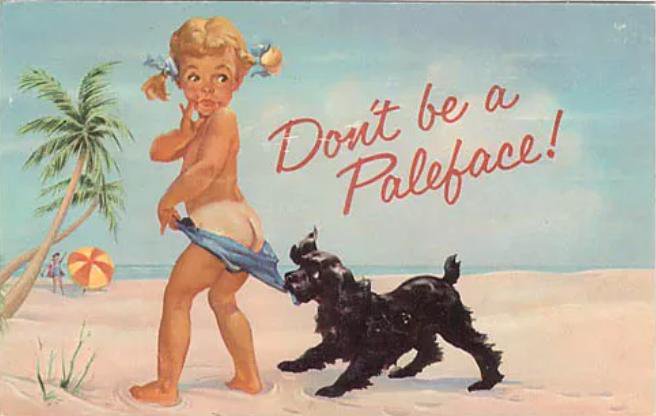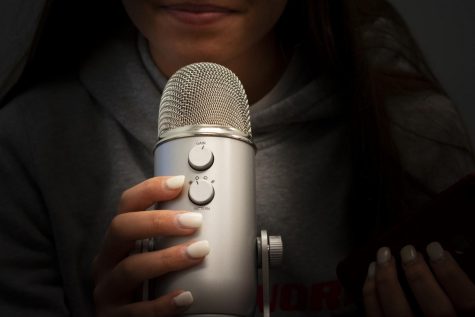To tan or not to tan?
August 1, 2019
Tanning is a popular summer pastime, but what kind of damage are you putting your body through? What is the skin cost of a golden brown tan? For most teens, sunscreen is unimportant, an annoying reminder from a parent before you go out the door.
Direct Sun Exposure
Direct exposure to the sun can cause a variety of results. These may depend on your skin type, heredity, or amount of time in the sun.
The first and most common effect of direct sun exposure is sunburn. Sunburns are considered to be a short-term effect. Sunburns are a reaction to the sun’s rays damaging the surface of the skin known as the epidermis. Aspirin, cool baths, and over the counter creams may be used to treat sunburns.
Depending on your skin type, you may be more easily able to tan. In order to suntan, the surface of the skin needs to be damaged. The pigment of the skin, hair, and eyes comes from melanin. An increase in melanin is your body’s trying to protect itself from further damage. Around 40-50% of UV exposure by age 60 occurs before age 20 according to the US National Library of Medicine.
Premature aging or photoaging happens slowly over time. The effects are wrinkles, leathery skin, and dark spots. Eyes may also be damaged in a condition called photokeratitis. While there are some predisposed conditions, premature aging is primarily caused by lots of sun exposure over time.
Skin cancer is one of the most detrimental effects of copious exposure to the sun’s rays. There are two types: melanoma and nonmelanoma. Melanoma is the most serious type of cancer of the skin. As long as it is identified in its early stages, melanoma is almost always curable, according to the American Cancer Society. The most common types of nonmelanoma cancer are basal cell skin cancer and squamous cell skin cancer; these are named after the types of cells that become cancerous.
Overexposure to the sun’s rays can damage DNA in skin cells or weaken the immune system. The more this goes on, the worse the overall condition gets. This can progress into skin cancer. Some symptoms to look out for are sores that don’t heal, a drastic change in skin texture usually around a burn, and a firm red swelling. If you are concerned about having skin cancer, get a screening from a professional.
“You don’t actually need to have planned direct sunlight in a day. You can get that from a healthy diet or vitamin D supplements,” said Dr.Elizabeth Liotta, a dermatologist based in Frederick, Maryland.
Sunscreen
The sun emits two different kinds of UV rays: UVA and UVB. UVA rays are shorter and cause sunburns and other irritation on the surface of the skin. UVB rays are longer and penetrate deeper into the skin. These rays are responsible for things such as wrinkles over long term exposure.
All types of sunscreen use SPF to show how powerful they are. SPF means sun protection factor, but this isn’t the case with UVA rays. Protection from UVA rays maxes out at 15-20 SPF for sunscreen. Applying frequently is more important than high SPF numbers.
On top of all this, the FDA allows companies to call sunscreen “broad spectrum” when they really aren’t. The FDA won’t get rid of sunscreens that have a high SPF but barely any protection from UVA rays. There are many third parties such as Consumer Reports, Putting the Pieces Together Health, and the GH Beauty Lab experts and dermatologists that have released their own lists of recommended sunscreens.
“We recommend the physical blocking agents that have either zinc or titanium dioxide in them. The difference between a physical blocking agent and a chemical sunscreen is that the physical blocking agent will cause the sun’s rays to bounce off the sun whereas the chemical sunscreens take about a half an hour to work and need to bind up within the skin. Chemical sunscreens can also cause rashes and sting the eyes,” said Dr.Liotta.
Dr.Liotta’s office also uses EltaMD sunscreen since it is the best physical blocking agent.
The bottom line is that this summer, a little sun is nice, but being cautious never hurts. Remember to reapply sunscreen and wear protective clothing when you can.
Artificial Tanning
In order to get a quick tan, many people turn to tanning beds. In fact, 35.7% of American adults and 19.3% of American teens have reported using a tanning bed according to an investigation led by JAMA Dermatology. You also aren’t getting a different treatment than the sun would give you. The BMJ held a study in which they found that indoor tanning is associated with a significant increase in risk of developing basal and squamous cell skin cancer. This risk was even higher for people under the age of 25.
“Tanning beds are usually ultraviolet A, which definitely causes more photodamage than going outside,” said Dr.Liotta. Dr.Liotta recommends for people with lighter skin a self-tanner that puts pigment on the skin but doesn’t damage it.
In the United States, 18 states and the District of Columbia have already banned the use of indoor tanning beds for people under the age of 18. The states are California, Delaware, Hawaii, Illinois, Kansas, Louisiana, Massachusetts, Minnesota, Nevada, New Hampshire, New York, North Carolina, Oklahoma, Rhode Island, Texas, Vermont, Washington, and West Virginia. The National Conference of State Legislatures has an in-depth comparison of indoor tanning restrictions on minors.
Currently, in Maryland, minors under the age of 18 are only allowed to use tanning beds if their parent or legal guardian gives written consent in front of the owner of the business. This is from Chapter 691 of the 2008 session of the Maryland General Assembly.
A new bill it trying to make it so that the use of tanning beds will be completely banned for minors in the state of Maryland. The bill has been passed in both the House and Senate. It will now cross over into the opposite chamber for consideration. If the ban passes, it will go into effect on October 1.
Psychology
Most people know that the sun’s rays can damage their skin. So why are so many people still tanning on a daily basis? Up until the 1920s in America, paler skin was more desirable. This was a way to display wealth since these people didn’t have to do manual labor jobs outdoors.
There are two different reasons as to why tanning became more popular in the 1920s. One is that the time period is marked by rebellious people. Clothing trends changed and people wanted to express their new-found freedom by going against what others did before them. The second reason is that in the 1920s more day laborers went to work in factories where they wouldn’t get a lot of sun. A tan was a way of showing that you had the time and money to go on a vacation and leisure outside.
The tanning movement had a slow start, but once it became prevalent, there was no stopping it. In 1929 Vogue announced that the new “sunburn movement” was created entirely behind showing off a hard-earned honey hue.
What is truly startling is that the first tanning oil was created around 12 years before Coppertone sunscreen was introduced. The first tanning oil was introduced in 1928 and was named Huile de Chaldée. Coppertone sunscreen took off in 1956 thanks to their Coppertone Girl ad campaign.
So why do people tan even though most are aware of the negative effects? People have an extreme group mentality. That’s why tanning went from non-desirable to the next biggest craze. The influencers of the time made others want to follow them.
Studies have also found that when people are warned about the negative effects of something they do, they may turn to that thing for comfort. In order to get people to stop tanning, we need a change in what is popular, not just a doctor telling people not to.









